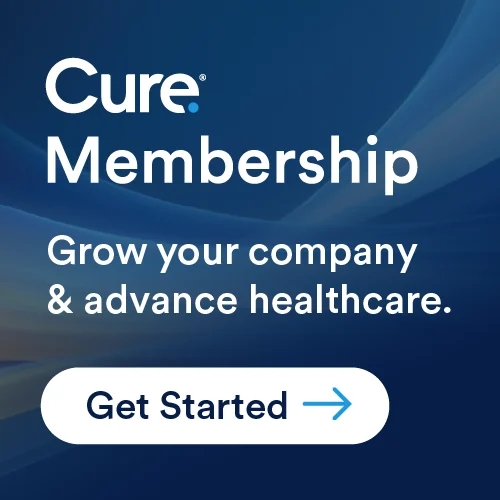
Overview
What obstacles must be overcome for disruptive tools like AI, VR and robotics to reshape healthcare as we know it? Daniel Kraft, MD, explains.
Super convergence will create new tools to redefine health
AI is the bright, shiny object everyone’s talking about. The expectations for it are huge. However, as healthcare innovation expert Daniel Kraft, MD, notes, Amara’s law says we tend to overestimate the effect of a technology in the short run and underestimate the impact in the long run. Kraft is more interested in the long run. That’s why, after 25 years practicing medicine and conducting biomedical research, he founded NextMed Health, an annual convocation dedicated to bringing healthcare innovations to patients worldwide.
During a recent keynote talk at Cure, Kraft cut through the current AI hype and talked about what’s happening now, what’s quickly coming down the pike — and what must happen to allow these technologies to be widely adopted.
What’s Now… and Near?
Technology that germinated a decade or more ago is beginning to mature in meaningful ways.
Genomics sequencing is one of them. Ten years ago, the cost of sequencing a genome was roughly $10,000. Now it's about $100 and will soon cost as little as $10, providing the opportunity for practically everyone to be sequenced. That means we will start crowdsourcing genomic information in the clinic, helping us understand common diseases as distinct genomic subtypes and treating them in a much more personalized manner.
Virtual reality, while once owned by everyday video gamers, is another technology now being applied to healthcare in a variety of areas, including mental health, pain reduction, and physical therapy. SnowWorld is a VR game designed for people with burn injuries — by refocusing the brain on penguins in their icy cold environment, patients experience a reduction in pain during wound care. Deep Well SDK is a video game platform used to reduce stress and lower blood pressure. By gamifying physical therapy, VR is also employed to achieve better patient compliance with their PT protocols.
AI-enabled diagnostics are ushering in the era of “medical selfies.” Next-generation wearables, hearables, and ingestibles are already starting to measure almost every element of our physiology. Hearables can track vital signs, pill-shaped video cameras can transmit images of the digestive system, and “smart pills” will help doctors determine the correct medication doseage. Soon, the microphone on our smartphones will be able to predict health issues— be it high blood sugar or diabetes, early neurological disease, mental health issues — through the sound of our voices.
What’s Next?
The future won’t be about any one technology but about the super convergence that will let us connect the dots to create new tool sets that will redefine health and medicine. It may sound like the Jetsons, but Kraft says to expect things within the next few decades, such as augmented and virtual beings in all sorts of clinical environments.
These virtual beings won’t replace nurses and doctors but will be helpful, especially when there's a shortage of healthcare professionals. They will be able to provide basic care, freeing up clinicians to employ their high-level expertise. In the future, the data on our phones will flow to our clinicians — our care teams, in fact — so they can optimize prevention, diagnostics, and data-enabled therapy when we need it. Integrating our social scores, financial health, and lab results will yield a hyper-personalized FICO-like score for our health. We will get early warnings based on the data from our wearables, hearables, and ingestibles.
We’ll even be able to 3D print our medication. Instead of taking 10 pills a day at different doses, therapeutics will be fine-tuned based on the data our wearables generate, and we’ll be able to 3D print a personalized pill at the corner pharmacy.
Perhaps the most encouraging disruption is the widespread access to care these technologies will provide. With tools like the Eko stethoscope, AI-enabled EKG, and bi-ped robots that a doctor can port into from across the world, even people in remote areas could access the basic well care and life-saving treatments we all deserve.
So What’s Needed?
While this is the dawn of an exciting, digitally-enabled health age, digital therapeutics won’t benefit anyone unless they’re integrated into the care system, Kraft noted.
Many aspects of the current system are stuck in the frameworks of the past — still employing fax machines and burning test results onto DVDs — and the antiquated business model of reimbursement-based medicine, which places value on chronic diseases as opposed to prevention and wellness.
Kraft used an oft-quoted economic adage to sum up the juncture at which we find ourselves: As we move toward the future, the difficulty we face lies not in the new ideas, but in escaping from the old ones.
His call to the community of healthcare innovators? We need not just to be incremental thinkers but exponential ones if we're going to move from where we are now to where we are next.








